Us And Trees - Getting Passionate About Trees
Us And Trees series part 1
Three years ago at the start of the Covid lockdown, when most of us were forced indoors and even limited with how we use our gardens, I amplified my passion for native trees. I even aimed to explain how our connection to our trees was essential and even a huge help to get through the lockdown.
Before I start I had better explain the title as many people suggest that I should re-title to ‘Trees And Us’. I appreciate that perhaps we should be humbled to the trees, especially the few native trees we have in Ireland compared to many countries. My approach through this series, though, is how do we relate and connect to trees and woodlands? So this series really is about ‘Us And Trees’.
I am going to jump into the deep end and suggest how much woodland we each need access to so we can make a sustainable difference. The amount of woodland per person does not seem much really, and this may surprise you when I share some stats related to this.
People living in apartments, who are reading this, may already question, “how is this going to relate to me?” I will share some ideas for apartment dwellers and for people with homes with small gardens soon.
I live in Ireland so I am using Ireland as an example for this topic. Considering the population of Ireland, 25% of it’s land mass should ideally be covered with native tree forest cover. Currently, the cover is just over 1%.
Ireland’s remaining land mass, after deducting space used for buildings, is about 5.5 million hectares.
25% of that remaining land mass, if used for trees and forests cover would be 1.375 hectares.
Considering the number of homes in Ireland, this breaks down to about a quarter of an acre of woodland per home.
When Claire and I lived at Carrowcrory Cottage and Labyrinth Gardens, we created a Tree Labyrinth that was a quarter of an acre of trees.
That Tree Labyrinth was, still is, home of over 300 trees because Alder, Hazel and Willow trees can grow very close together. They are also good trees for making hedges with, for example. Even close together those trees can produce and release a substantial amount of oxygen, when in leaf.
Those Tree Labyrinth trees are well over 10 years old, 15 years old now, and 12 years old in the photograph here. Through using the online calculation tools at TreeChange.ie, I remarkably discovered that Tree Labyrinth was more than offsetting the CO2 I caused through my quite minimal car driving combined with my home energy use.
So this is what has sparked off my ‘Trees And Us’ series that I am commencing here. A series that shares practical suggestions for small projects to increase native tree cover, plus some folklore behind this.
But before I can really suggest, “hey everybody, let’s go and plant more trees and save the planet!” I do not think any of this can happen without some education about trees and woodlands. Also, I do not think the provision of education would work without people first having a passion for trees and woodland life.
A challenge is how to return human passion and connection to trees and woodlands. The present culture seems to have a majority in favour of ‘neat and tidy’. “Lets chop it all down as it is a mess and blocks the light”.
I feel that the passions we need for trees and woodlands need to be similar to the passions we have for food, clean water, and good air as we cannot survive without those. But somehow we seem to have lost the grasp of food, water, and air, being made possible by our tree and woodland coverage.
I believe it is worth remembering that before humans built stone and brick temples and churches, our churches were among the trees, our chosen groves, and usually close to water. Spring wells, later to become Holy Wells, within woodlands were local gathering places for ceremony, ritual, thanksgiving, and rites of passage.
Forest Education …
What I love about the surge of Forest Education, through the Forest Schools, during the past 30 years, has been the wonderful encouragement to connect to our natural landscapes and surroundings.
The earliest known semi organised version of ‘forest schooling’ I know of, is that 19th century poets, Wordsworth and John Ruskin, took people to the woods, during the 19th century.
That was quite an inspiration when I was facilitator for ‘Bards In The Woods’.
More formal, yet still wonderful at the time, was Baden Powell starting up the Boy Scouts at the start of the 20th century.
Most of the Scouts activities were woods and forest based. My own Scouts Skipper during the 60s made sure we all earned our Backwoodsman (Bushcraft} badge, and Pioneering Badge. Sadly, the woodlands do not seem to be so much in the priority with Scouts today.
About the time of Baden Powell, there were the incredible Susan Isaacs and Margaret McMillan who took groups of London children into the forests for education.
Trees For Life, a charity for bringing back native Scotland forestry, was founded in The Park of The Findhorn Foundation in Scotland.
During 1995, Findhorn Foundation in Scotland, and Bridgewater College in Somerset developed Forest Schools for youngsters and teens that have become quite a template for Forest Schools since.
The Open College Network Diploma in ‘Forest School Teaching’ was launched in Wales 2003. Also, Outdoor And Woodland Training (OWL) commenced in Scotland.
A Forestry Education Initiative for all ages was founded by the Forestry Commission in Scotland during 2011.
The Forest School Association of UK formed in 2012, based in Carlisle, Cumbria, and this quickly became a hub for forest schools, their teachers, teacher training, and encouraging better standards in forest education.
Irish Forest School Association formed in Ireland during 2016. Started small based in Sligo, but is now based at the wonderful Brigit’s Garden, Co. Galway. The Irish Association is now very well founded with accredited teacher training courses and a terrific network of associations.
Forest Schools of Northern Ireland set up in 2018 in Belfast.
Forest education has also integrated into secondary schools in the UK during the past 6 years, and is starting to get entry into Ireland schools now. Forest education is getting towards the stature of maths, science, and literacy.
Also much more adult forest education is coming on board, and this is starting to get some traction in tourism around Ireland too. Not everyone visits Ireland just to take photos of Ring Of Kerry, Cliffs of Moher, and Newgrange.
Forest Education I am speaking of here is very different to ‘Forest Bathing’ that I will write about during this series too.
Becoming Woodland Curators
I will finish this first chapter of this series with a couple of ideas of ways we can become ‘woodland curators’.
The easiest is if we have a garden at our home, and we can use some of that space to grow trees. If you can spare a fifth of an acre within your garden that is a great start. If your garden is small, anything you can spare gets you involved.
You can always grow some trees in your own garden, plus support tree growing, sharing, and woodland management elsewhere.
Another option is to help someone with their woodland project. This is something that apartment dwellers and people with small gardens can consider. There’s usually no investment, no payment into the owner’s budget, and it is a very loose arrangement. You may have no role in the decision making though. This is perhaps not a good arrangement if your intention is to have a ‘tree sanctuary’.
Another suggestion is to ask around your local area to see if anyone is aware of any unused land and find out if you can negotiate a contracted arrangement with the owners.
Committing to rent to own for at least 10 years is best, and if that can be extended to 25 years, even better. Add an option to be able to sell or pass on the contract.
Try to go for a minimum of a fifth to a quarter of an acre for every person involved.
Through Us And Trees Part Two I will continue this and share some wonderful local ‘co-operatives’ examples.
If you would like to join my 'Ogham Prompts' course? 20 optional modules a year, join in from any module any time as this is a cycle course, plus some meet-ups Please consider upgrading to monthly or very discounted annual subscription and get instant access to my 'Ogham Prompts' course modules. Subscribers will also receive enlarged versions of my free postings to include video clips and interviews where possible. I believe more value that a book, though I have books being put together too. All of my 20 Ogham Prompts are now linked up for easy reference in one place … gazetteer


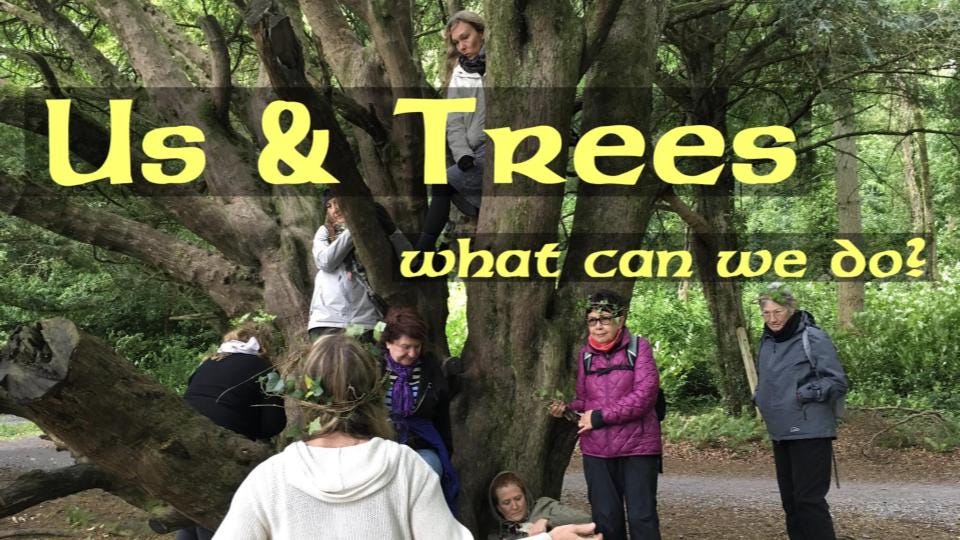
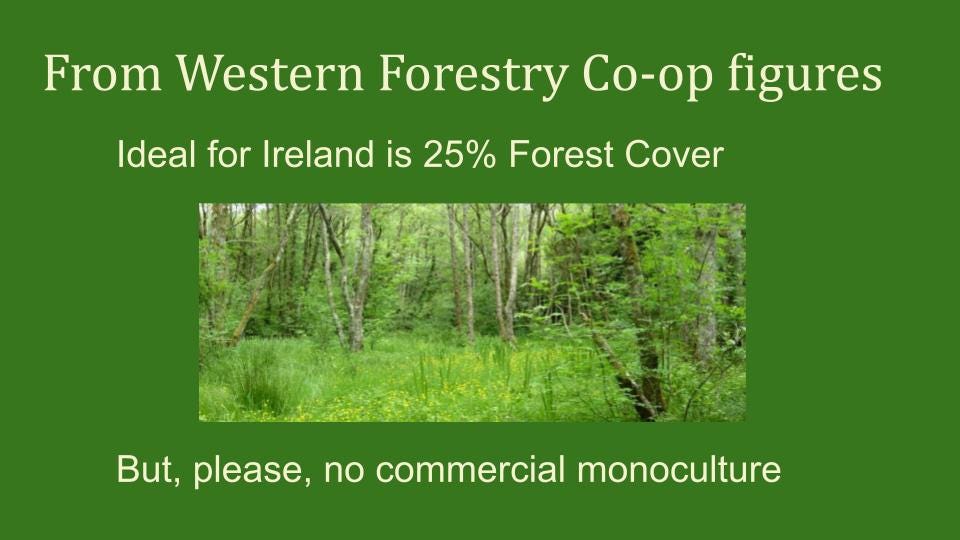
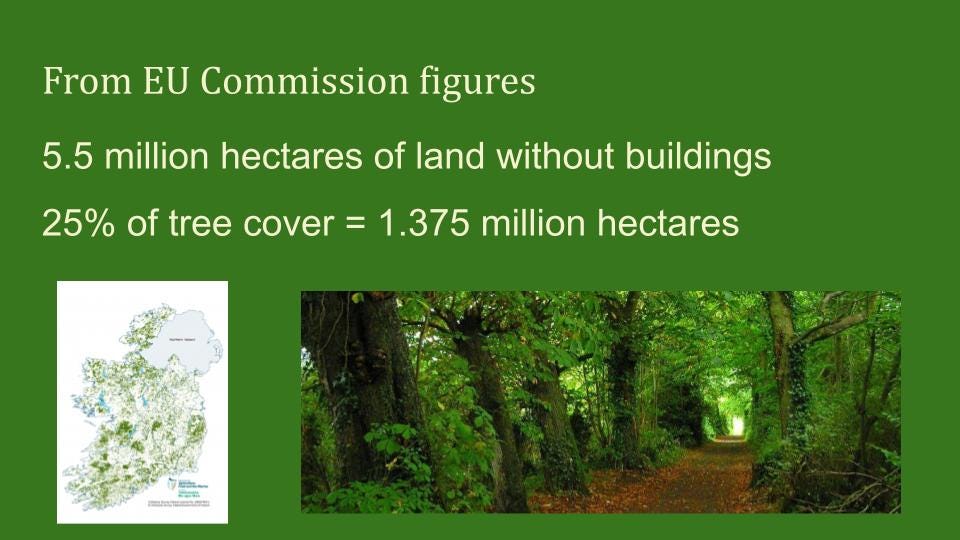
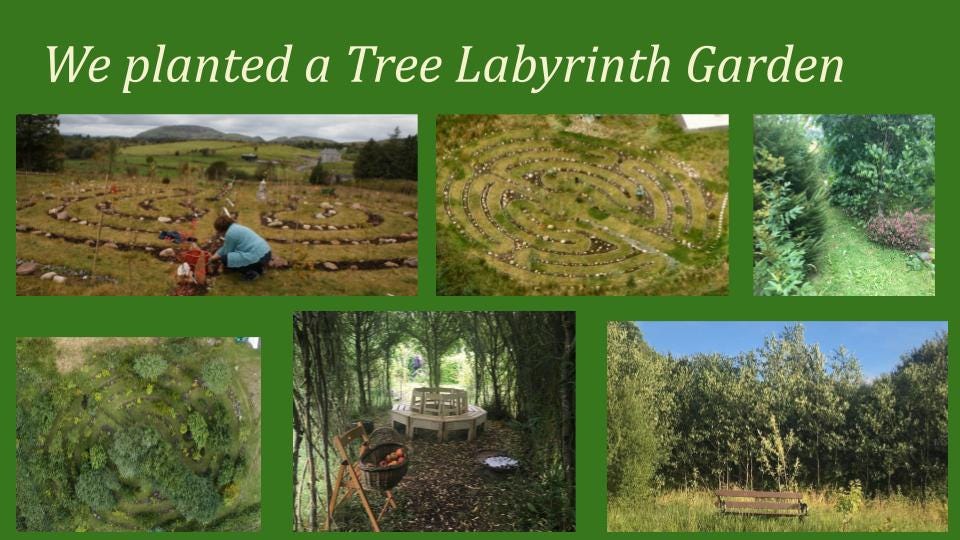
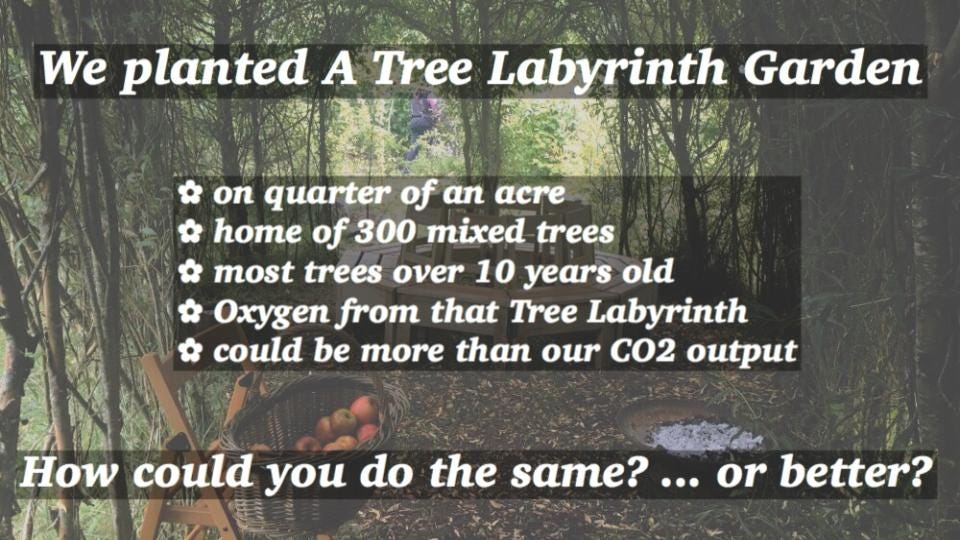
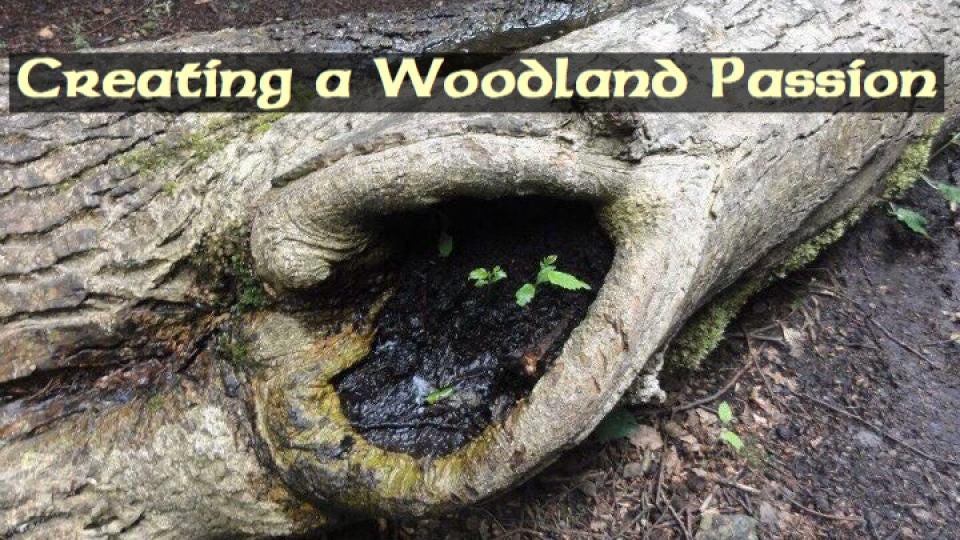
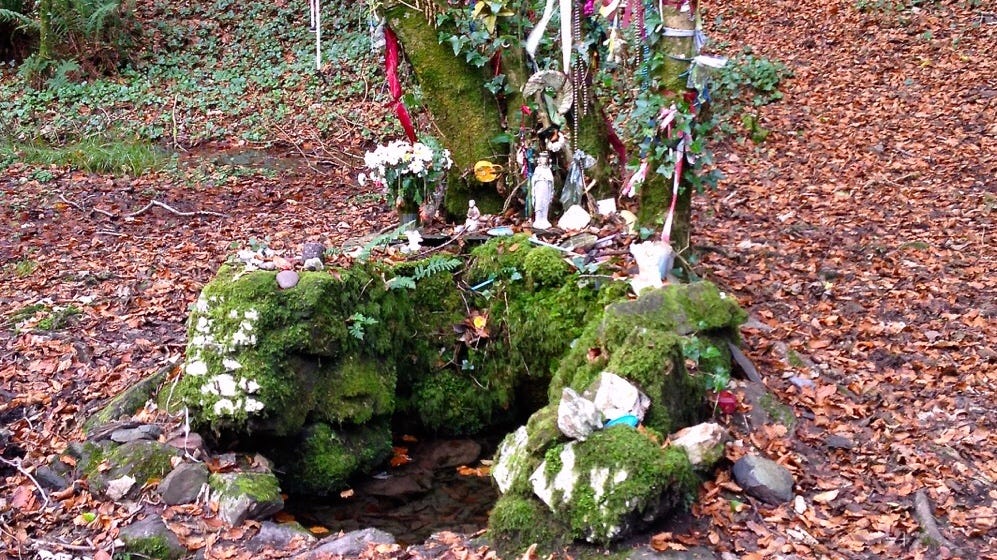
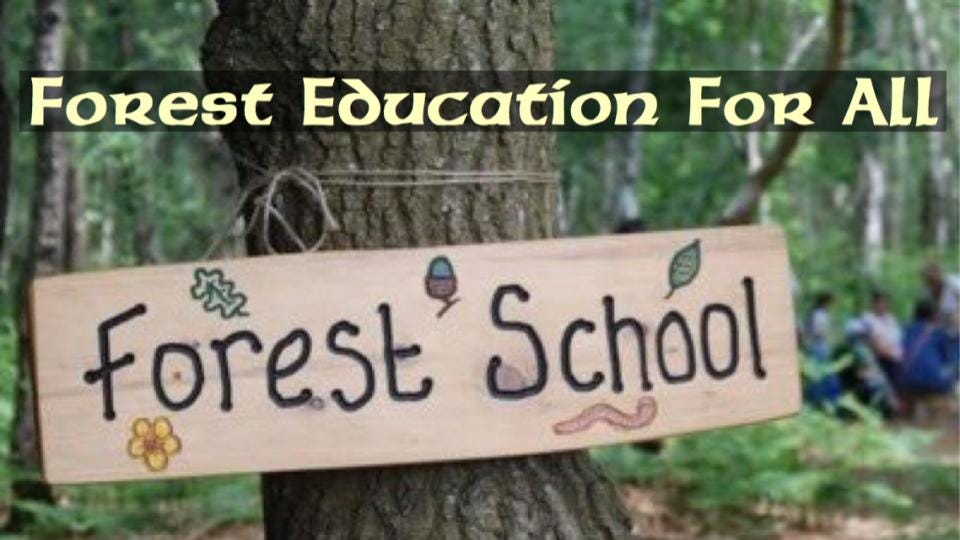
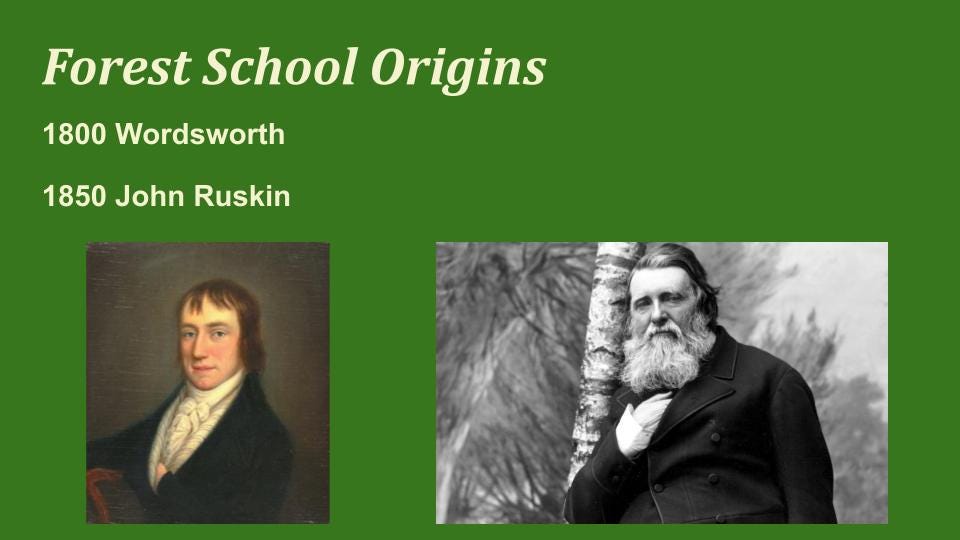
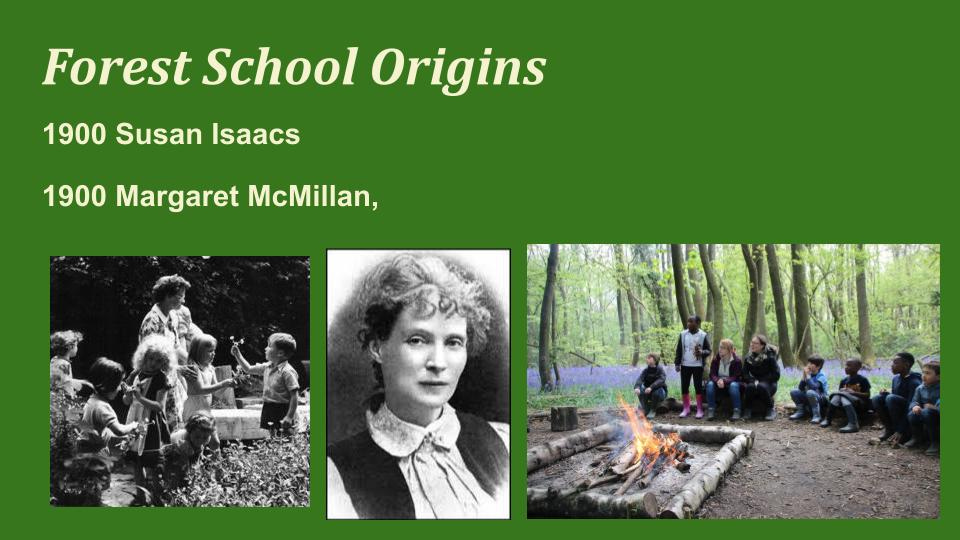
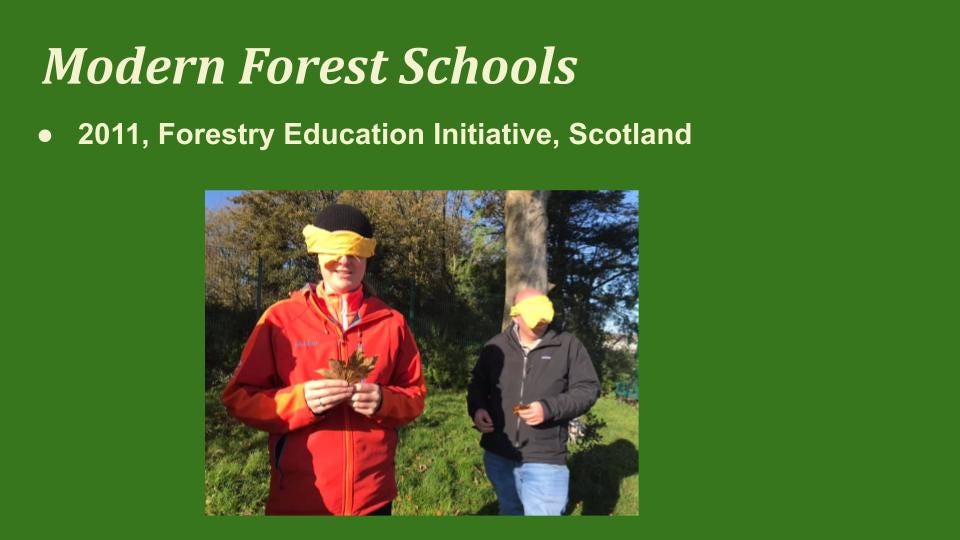
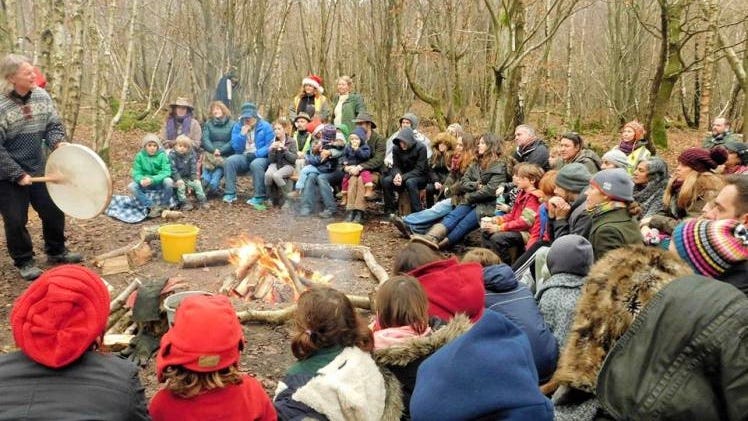
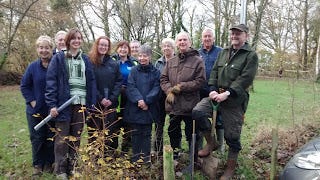
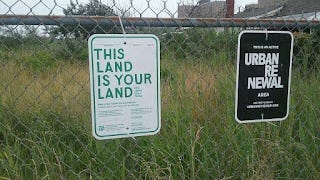
Good work, John! I've got a tree poem coming down the pike that you might like.
With relations in Ireland, we've visited many times. Have always noticed, although it's so fabulously green, there weren't many forests. Mostly would see scattered stands of trees here & there. I didn't think that hard on it, until reading your post now. Seeing the stats, especially about the lack of native trees in Ireland was startling.
Thanks for a great read!